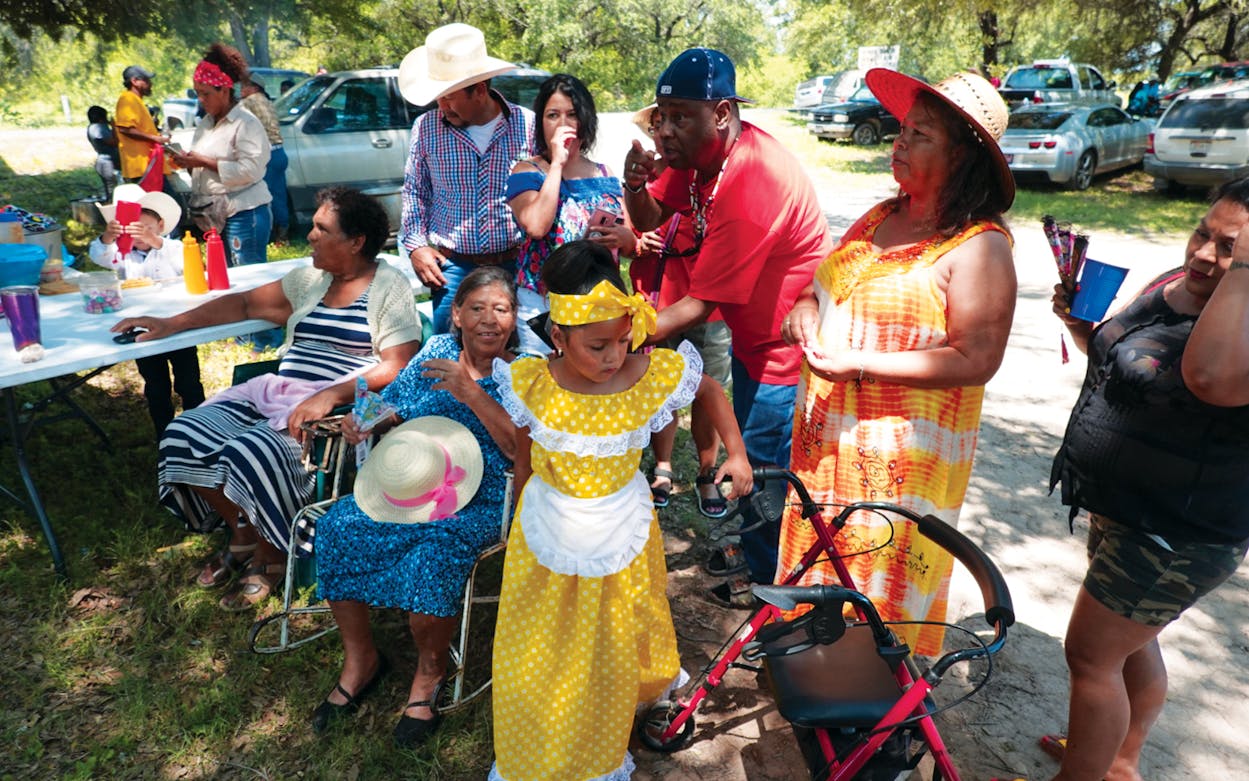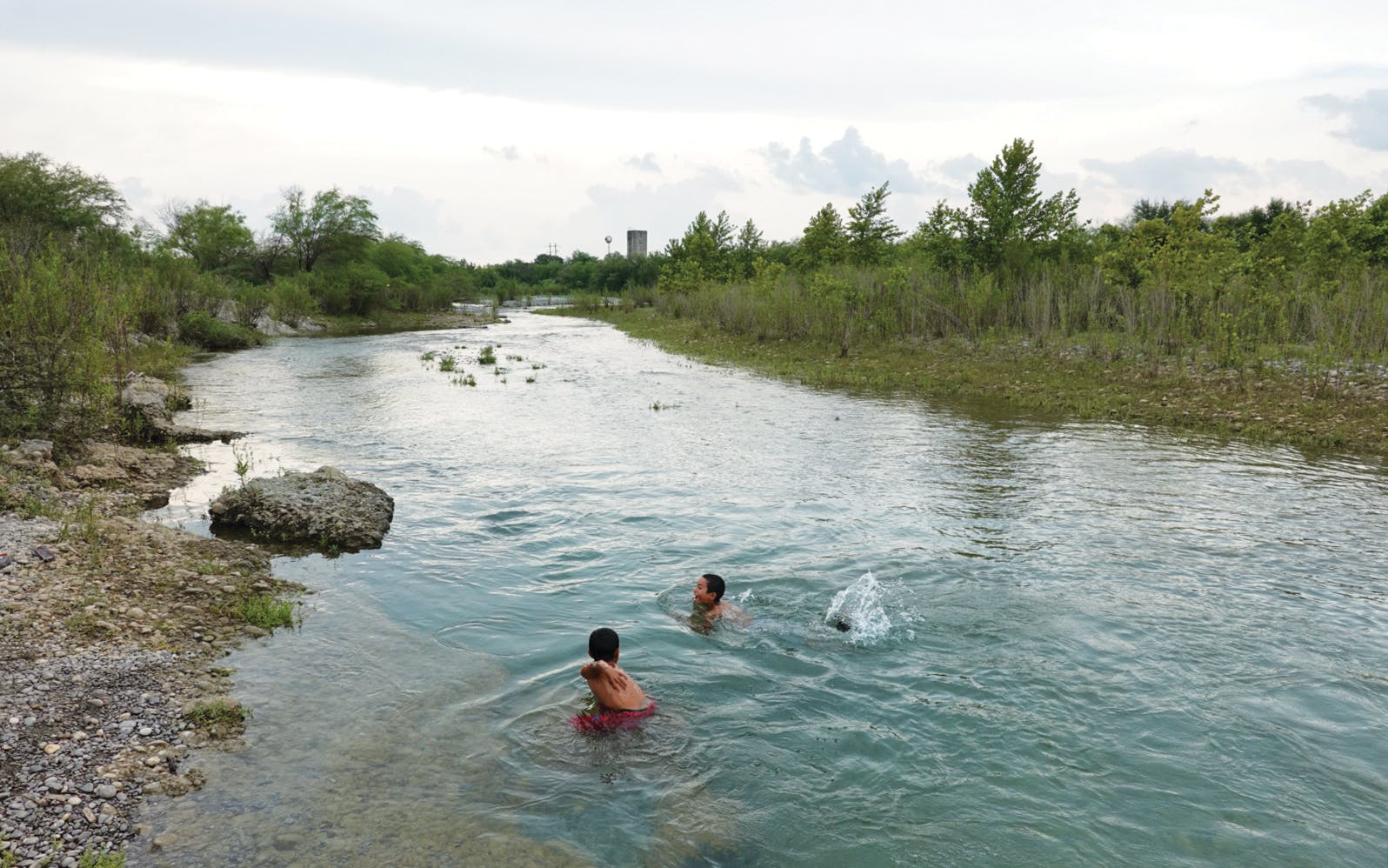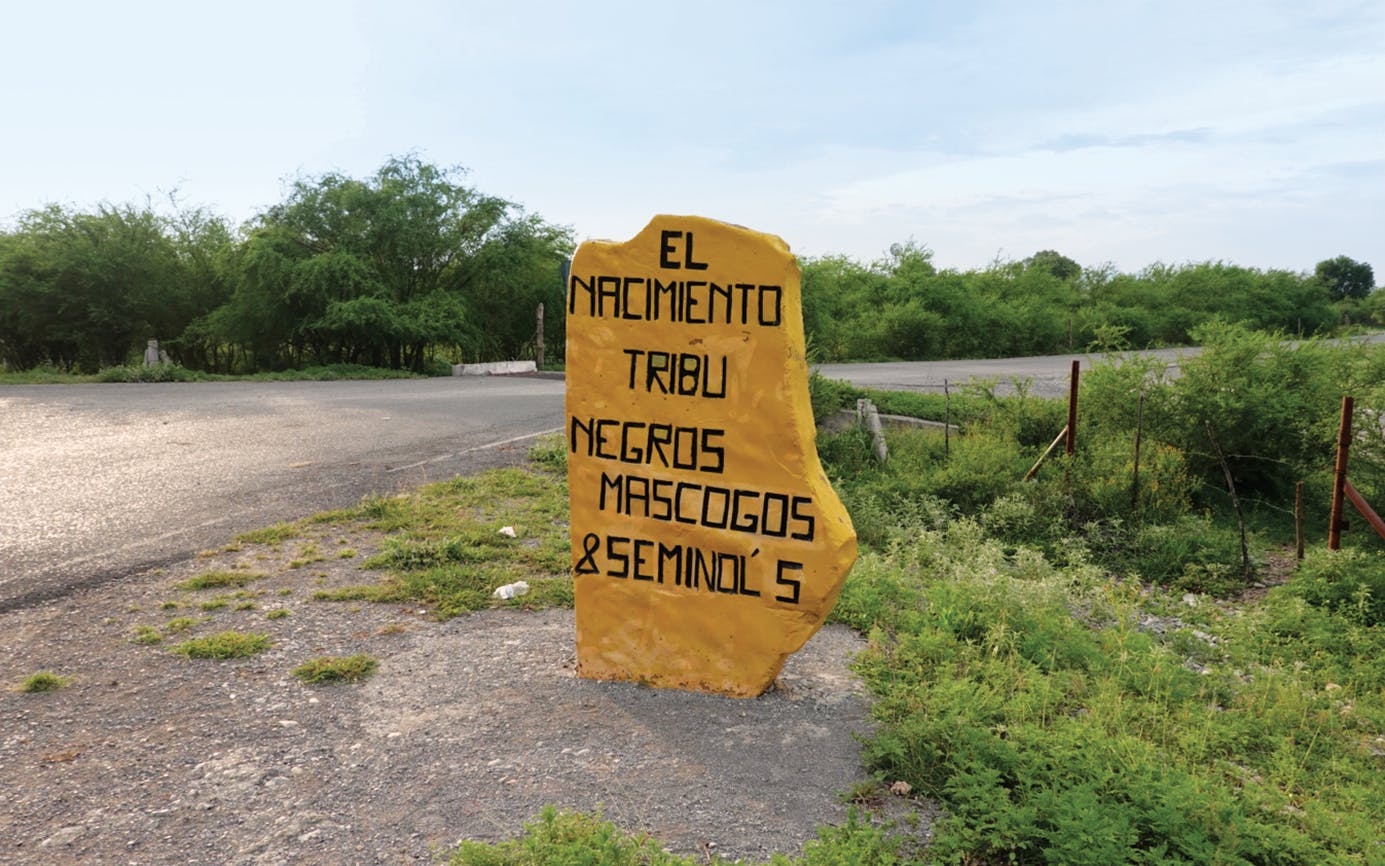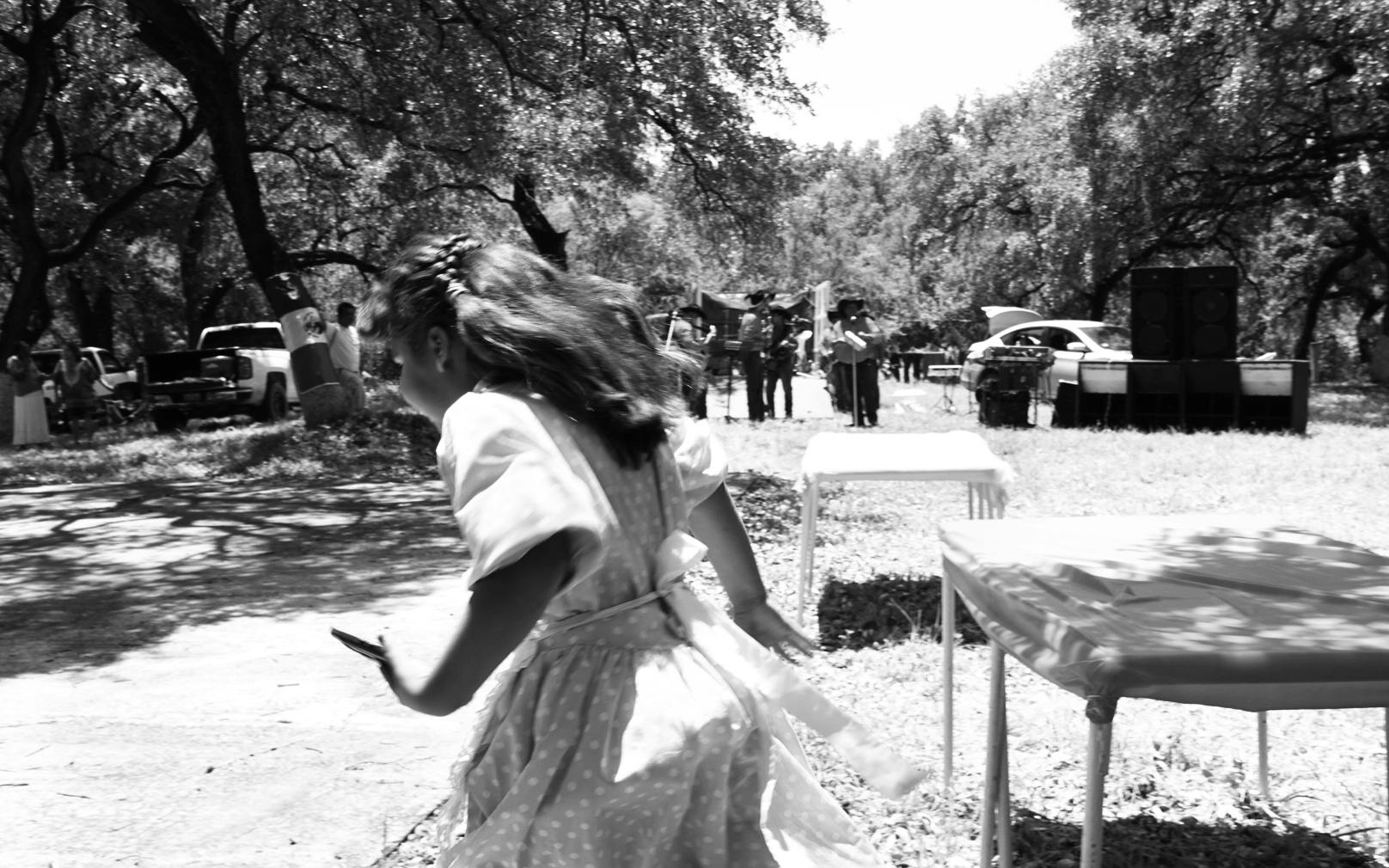Descendants of African Americans in Mexican history
Why This Mexican Village Celebrates Juneteenth
Descendants of slaves who escaped across the southern border observe Texas’s emancipation holiday with their own unique traditions.
By Wes Ferguson
June 19, 2019

The morning before Juneteenth, Corina Harrington and her sister Miriam Torralba left San Antonio shortly after sunrise and headed south to Mexico, retracing a portion of the same route their African American ancestors followed in 1850 when they escaped slavery in the United States and fled to freedom south of the border.
The sisters arrived around midday at their father’s house in the ranching village of Nacimiento de los Negros in Coahuila, about three hours south of Eagle Pass. As afternoon drifted toward evening, the blue silhouettes of the Sierra Madres were all but obscured by clouds, as siblings, cousins, extended family members, and childhood friends kept arriving in twos, threes, or fours. They strolled over to the cool and swift Río Sabinas to swim in water as clear as any Hill Country stream. They politely tasted the dried and shredded meat of a mountain lion that one of their cousins shot on their dad’s nearby goat ranch, and they laughed and reminisced and readied for one of the most important days of the year in a village whose name literally means “Birth of the Blacks.”

“We never knew it was called Juneteenth,” Harrington, 45, said of the holiday commemorating the emancipation of Texas slaves in 1865. In Nacimiento, where Harrington was born and raised until she was seven and where she has returned nearly every summer since, the June 19 festival and reunion is known as el Día de los Negros, the Day of the Blacks.
Although few Black people remain in northern Mexico, the region was once home to thousands who escaped slavery in the United States. Mexico outlawed slavery in 1829, an underlying factor in Texas’s declaration of independence seven years later. In 1836, there were an estimated 5,000 slaves in Texas, a number that ballooned by 1860 to 182,500—more than 30 percent of the state’s population.
Freedom lay just across the Rio Grande. Maria Esther Hammack, a doctoral candidate at the University of Texas at Austin, estimates that as many as 10,000 slaves followed a clandestine Southern Underground Railroad to Mexico. Most of them fled from Texas, but she’s found evidence of slaves escaping to Mexico from as far away as North Carolina.
The most famous refugee to escape Texas was a slave named Joe. Owned by William Barrett Travis, Joe was one of the only people spared following the battle of the Alamo. Hammack has also written about a Mexican man who was married to a Black slave near Victoria. In 1848, they stole two horses and rode toward Mexico, but were intercepted near the Lavaca River by pursuers who hanged the husband and returned the widow to bondage.

Slave hunters roamed the southern border for runaways. In 1855, Texas Ranger James Callahan even led a 110-man raid across the Rio Grande to return escaped slaves living in Mexico. Turned back by the Mexican army, his men sacked and burned Piedras Negras before they fled back across the river. “The Rangers have this dark history,” Hammack said. “They were for-hire slave catchers.”
Harrington’s ancestors who settled Nacimiento were a band of people called the Negros Mascogos, in Spanish, or Black Seminoles in English. The group grew from runaway slaves who were given asylum in Spanish Florida and lived among the Seminoles until they were forcibly removed to Oklahoma. With few prospects in Oklahoma and the ever-present risk of being kidnapped by slave hunters and sold into bondage, they turned to Mexico.
After the Civil War, several of Nacimiento’s Mascogos came back to the United States with their families in 1870 to serve as Indian scouts in the Army, first at Fort Duncan in Eagle Pass and eventually at Fort Clark in Brackettville. In 1876, though, the military ordered them to leave. Most returned to Nacimiento, but some remained in Brackettville, where Harrington’s grandfathers were born. Both men returned to Nacimiento and married Mexican women.
When Harrington’s mother was a child, she would sometimes visit the larger nearby town of Muzquiz, where she remembers other children whispering in Spanish, “Look, the Blacks!” But as the Mascogos continue to marry into other local families or to leave for better opportunities in Texas, they are losing some of the features that helped them stand apart. “You see kids walking the streets, and they just look Mexican,” Harrington said.

On the morning of Juneteenth, Nacimiento’s festivities began with a trail ride through fields and thorny brushland still lush from recent rain. Afterward, several hundred Mascogo descendants gathered under shade trees to barbecue and boil ears of corn over wood fires. The tribe’s traditional dishes—like soske, a corn-based drink, and a sweet potato bread called tetapún—were apparently saved for another day.
Children recited songs passed down from their Mascogo ancestors, who sang in an English dialect that survives only in the lyrics of slave-era spirituals. Several women wore the long, polka-dotted pioneer dresses they believe to be traditional (disputed by others, who favor Seminole patterns). After perhaps another swim in the cool and clear Río Sabinas, the day would end with a village-wide “Dance of the Blacks.”
Once the Juneteenth festivities were over, a few hundred Mascogos would continue to wake up each morning in the village of Nacimiento. Most of the others would be gone again to Texas.
- More About:
- Texas History
- Mexico